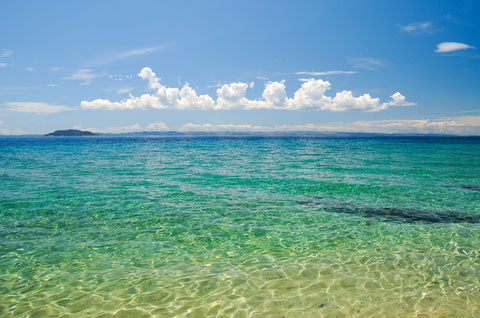
SAN FRANCISCO — About 6 million years ago, a mile-high field of salt formed across the entire Mediterranean seafloor, sucking up 6 percent of the oceans' salt.
Now, new research has pinpointed when key events during the formation of that "salt giant" occurred. The new research, presented here Dec. 11 at the annual meeting of the American Geophysical Union, could help unravel the mystery behind the great salt crisis.
Salt crisis
Every so often, huge accumulations of the world's salt form in one place. The most recent salt crisis happened during the Miocene Epoch, which lasted from about 23 million to 5 million years ago.
About 6 million years ago, the Strait of Gibraltar linking the Mediterranean with the Atlantic Ocean was closed and instead, two channels — one in Northern Morocco and another in Southern Spain — fed the sea with salty water and let it flow out, said study co-author Rachel Flecker, a geologist at the University of Bristol in England.
But during the Messinian Salinity Crisis, as this particular event is known, Eurasia was colliding with Africa, squishing the outlet flow for the Mediterranean Sea. But tectonic shifts left the basin floor below the outlet channel between the two water bodies intact. Dense salty water from the Atlantic rushed in, but couldn't leave the sea. Water evaporated; salt piled high; and sea life collapsed.
"It wasn't a nice place," Flecker said.
Sign up for the Live Science daily newsletter now
Get the world’s most fascinating discoveries delivered straight to your inbox.
In a series of pulses over about 600,000 years, the sea dried out, and a 1-mile-high (1.5 kilometer) salt wall grew across the Mediterranean seafloor, a "bit like the Dead Sea, a huge brine field," Flecker told LiveScience. (In places, it might have been even higher.)
Then, in a geologic flash of time just 200 years' long, waters from the Atlantic cut through the Strait of Gibraltar and flooded the Mediterranean, refilling the sea. [50 Amazing Facts About the Earth]
Precise dates
Though scientists understood some of what triggered the great salinity crisis, they still don't fully understand the climatic changes that may have been involved.
The Earth wobbles like a top around its axis as it spins, in a roughly 20,000-year cycle. That shift affects how much sunlight certain parts of the Earth receive at different points in the cycle, thereby changing the climate. In the Mediterranean Sea area, sediments are striped with dark and light bands that correspond to surges and die-offs of sea life as a result of those climactic shifts.
Flecker and her colleagues with the Medgate project, a European Union project that is studying the salinity crisis, looked at those sediments to understand how the salt crisis began.
Unfortunately, they didn't know what part of each band corresponded to a particular position of Earth's axis, making it difficult to sequence events in the crisis.
The team used climate simulations to understand rainfall, evaporation and water flow into and out of the Mediterranean for a period spanning 22,000 years around the crisis onset, and tied that to sediment data. Ancient rivers in North Africa dumped huge pulses of freshwater into the sea in late summer, leaving traces of surging biological activity in the fossil record, the models show.
Based on their simulations, the researchers found the freshwater pulses happened at a time in the Earth's orbital rotation when the Northern Hemisphere would experience colder winters and hotter summers. That, in turn, meant that the evaporation must have started much later in the Earth's orbital cycle.
In addition, revised dating can now tie the onset of the salt crisis with the formation of massive ice sheets in the Arctic, which lowered sea levels and reduced water flowing from the Atlantic ocean into the Mediterranean Sea. Combined with dryer weather conditions in Africa, that may have helped trigger the conditions that formed the salt giant.
Follow Tia Ghose on Twitter and Google+. Follow us @livescience, Facebook & Google+. Original article on LiveScience.

Tia is the managing editor and was previously a senior writer for Live Science. Her work has appeared in Scientific American, Wired.com and other outlets. She holds a master's degree in bioengineering from the University of Washington, a graduate certificate in science writing from UC Santa Cruz and a bachelor's degree in mechanical engineering from the University of Texas at Austin. Tia was part of a team at the Milwaukee Journal Sentinel that published the Empty Cradles series on preterm births, which won multiple awards, including the 2012 Casey Medal for Meritorious Journalism.









